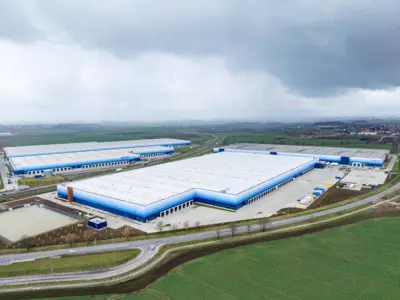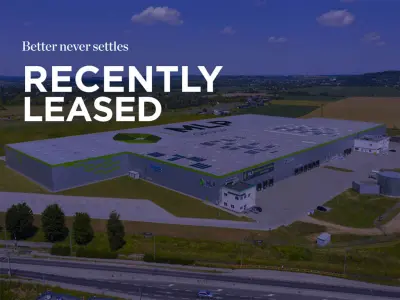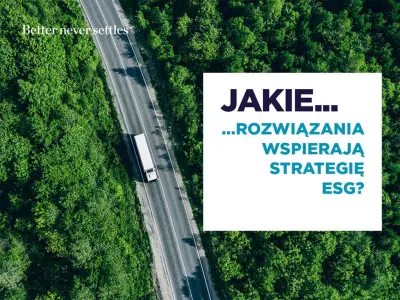A regional leader
According to data from Cushman & Wakefield, Silesia has nearly 5.5 million sq m of modern warehouse and industrial stock, 32% of which, or 1.7 million sq m, was built in the last three years.
“Silesia is Poland’s second-largest warehouse market after Mazovia. It is also the most complex and unique in the country in terms of depth, the number of locations and the profile of tenants present there. As a result, Silesia, alongside Warsaw, is a leading regional CEE market, offering the largest industrial stock equating to approximately 766 full-size football pitches. By comparison, supply in other major production and warehouse hubs is significantly lower – Budapest and Prague, for instance, have nearly 3.5 million sq m each,” comments Damian Kołata, Partner, Head of Industrial & Logistics Agency Poland, Head of E-Commerce CEE, Cushman & Wakefield.
Lower supply levels in other CEE locations go hand in hand with significantly lower vacancy rates, which is likely to dampen the enthusiasm of many investors who will direct their attention to other, more promising markets such as Silesia.
“At the end of 2023, Silesia’s vacant stock amounted to approximately 333,000 sq m and surpassed that reported in Hungary, the Czech Republic and Romania. By contrast, the Prague market offered just under 30,000 sq m of unoccupied space – 11 times less than Silesia. According to the latest data from Cushman & Wakefield, at the end of the first quarter of 2024 there was more than 350,000 sq m of vacant warehouse space in Silesia. In addition, developers are launching and planning new projects, which is likely to attract many investors to invest capital here,” comments Adrian Semaan, Senior Research Consultant, Industrial & Logistics Agency, Cushman & Wakefield.
Cushman & Wakefield also notes that at the end of 2023 there was just under 280,000 sq m under construction, a year-on-year decrease of over 50%. Of that total, only 125,000 sq m was not pre-let. At the end of the first quarter of this year, total development pipeline was approximately 220,000 sq m, of which only approximately 63,000 sq m was available to lease.

The Silesian market is driven by tenant diversity and a local specialisation
Cushman & Wakefield estimates that last year’s total warehouse take-up in Silesia reached nearly 890,000 sq m, the third-highest leasing volume in Poland after Mazovia and Lower Silesia. Silesia’s net take-up comprising new leases and expansions amounted to almost 650,000 sq m, the second-highest figure after that recorded in Lower Silesia.
“The strength of Silesia lies in a strong diversity of investment locations as well as a variety of industries active here and sources of foreign capital. At the same time the region has in recent years successfully developed its own local automotive specialisation, which is perfectly illustrated by the performance of the Katowice Special Economic Zone. In the Zone alone, there are more than 600 Polish and international companies, approximately 40% of which have links with the automotive, metal and machinery industries. Other leading sectors in our economic zone include food, plastics, chemical, electrical and electronic. Each investment by investors from these sectors means a potential increase in warehouse stock on the local market,” comments Rafał Żelazny, PhD, DSc, President of the Board of Katowicka Specjalna Strefa Ekonomiczna SA.
Silesia’s diverse economy has translated into tenant diversity on the local warehouse market and into take-up structure.
“Compared with 2022, the automotive and manufacturing sectors saw their shares in take-up rise significantly in 2023 from 12% to 23% and from 14% to 16% respectively, while logistics companies saw their share fall from 30% to 21%. The more muted leasing activity of logistics service providers is, however, a trend seen also in other warehouse locations across Poland. And yet, this is likely to be temporary, with a revival in occupier activity in this sector expected in the coming quarters. It may be the strongest in Silesia, which on account of its strategic location and well-developed infrastructure facilities, is one of the key CEE markets targeted by TFL companies,” explains Konrad Jacewicz, Associate, Industrial Agency, Cushman & Wakefield.
Local warehouse rents are also an incentive to invest in Silesia. Headline rents in the region are in the range of EUR 4.20-5.50 per sq m, with effective rents likely to be negotiated down to EUR 3.00-4.30 per sq m as a result of financial incentives, fit-out allowances and rent-free periods.
“For instance, the Prague region in the Czech Republic, which is the most expensive CEE market, commands headline rents of EUR 6.50-7.75 per sq m, with effective rents being lower – in the range of EUR 6.20-7.50 per sq m – due to rent-free periods and fit-out allowances. Headline rental rates in the Ostrava region stand at EUR 5.20-5.75 per sq m, while effective rents remain at EUR 4.90-5.50 per sq m. In Slovakia, headline rents are EUR 4.75-5.60 sq m in the Bratislava region, with warehouses in its urban areas fetching at least one euro more; and with developers very unwilling to give ground during negotiations, these are often, in fact, effective rents,” adds Damian Kołata.

The labour market offers growth potential
According to Randstad’s data, the working age population accounts for nearly 59% of the total population of the Silesian province of almost 4.3 million. This is one of key factors impacting investment decisions. The percentage of the pre-working population also remains stable at 17%. The median age of an employee is 41 years while those aged 35-44 account for the largest proportion of the workforce, which is also good news for employers. This means that the Silesian labour market has a large pool of employees who have several or more years of professional experience and many years ahead of being economically active.
“Average employment in the Silesian enterprise sector stands at approximately 784,000, which is evidence of the maturity of the local labour market and the strength of the Silesian province as an attractive destination for investment, in particular investment in new technologies and manufacturing industry. The Silesian metropolis is experiencing growth in many key economic sectors, providing access to unique R&D skills and enabling investors to develop innovative projects. No wonder Katowice and Silesia have in recent years become a major destination for investors from such sectors as shared services, high technologies and R&D. In addition, local governments have been taking consistent action to improve the quality of life and strengthening the brand of the entire province, which is expected to result in more investment in the near future,” says Dagmara Żuromska, Strategic Business Development Senior Manager, Randstad.
For more information please see Cushman & Wakefield’s latest report “Mines of Business. Warehouse & Production Market in Upper Silesia”, which looks at the investment potential of the Silesian province as a location for warehouse and industrial projects.


















